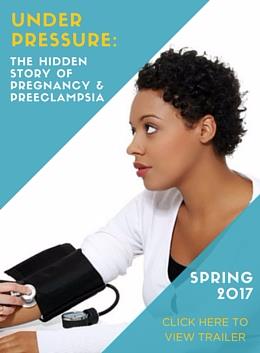Double board-certified in OB/GYN and Maternal Fetal Medicine Dr. Kecia Gaither offers tips on uterine fibroids and how they’re treated
New York, NY (PRWEB) The vast majority of American women are expected to develop uterine fibroids at some point in their lives. But despite its prevalence, this much-misunderstood condition is surrounded by myths and misconceptions, according to perinatal consultant and women’s health expertKecia Gaither, MD.
About 70% of white women and 80% of African-American women have fibroids – non-cancerous tumors growing within the wall of the uterus – by the time they reach age 50, according to the National Institutes of Health. This important public health concern leads to more than $2 billion in direct health care costs each year.
“Women trying to understand their risk of developing fibroids – and their options if they’re diagnosed – are often thwarted by misinformation circulating about this potentially confusing condition,” explains Dr. Gaither, a double board-certified physician in OB/GYN and Maternal Fetal Medicine who holds a master’s degree in public health. “It’s crucial to set the record straight about fibroid facts versus fiction.
Fibroid facts vs. fiction
What are some of the most common myths about fibroids? Dr. Gaither details 5 common myths and offers the truths for each.
Myth: All women with fibroids will experience symptoms.
Fact: Between 50% and 80% of women with fibroids won’t have any symptoms, such as pain or heavy menstrual bleeding. “Many women with fibroids don’t even know they have the condition,” she says.
Myth: Fibroid tumors will become cancerous.
Fact: This almost never happens. Uterine fibroids, which are known medically as leiomyomas, are nearly always benign, with far less than 1% turning malignant. “Having fibroids also doesn’t increase a woman’s chance of developing reproductive system cancers,” Dr. Gaither notes.
Myth: Untreated fibroids will continue to grow.
Fact: Since fibroid growth is fueled by estrogen, they grow and shrink in alignment with a woman’s hormone levels throughout her life. In pregnancy, existing fibroids may grow and new ones may form as estrogen levels heighten. On the flip side, fibroids usually shrink after menopause as the ovaries cease making estrogen.
Myth: Ultrasound is the best imaging tool to diagnose fibroids.
Fact: Pelvic ultrasound is indeed a common method of revealing fibroid growth, but doesn’t work as well as a pelvic MRI scan, Dr. Gaither says. “Ultrasound often underestimates the number, size and location of a woman’s fibroids,” she adds.
Myth: Women with fibroids must seek medical treatment.
Fact: If fibroids don’t cause any symptoms, which can also include pelvic pressure and frequent urination, then treatment isn’t necessary, Dr. Gaither says. “The one exception would be if the fibroids, while asymptomatic, are causing repeat miscarriages or infertility,” she says.
How are uterine fibroids treated?
When treatment for fibroids is deemed necessary – typically because symptoms have been pervasive and problematic – a variety of approaches may be taken. These include:
- Medications that shrink fibroids, including so-called gonadotropin-releasing hormones that typically bring on symptoms of menopause. “Drugs that block the hormone progesterone can also slow or stop fibroid growth,” Dr. Gaither notes. “Medications may also reduce the heavy bleeding and painful periods fibroids can cause.”
- Progestin-releasing IUDs, or intrauterine devices. “Women whose fibroids don’t distort the inside of their uterus can have this type of IUD placed, which reduces painful, heavy bleeding from the fibroids,” says Dr. Gaither.
- Hysteroscopy, which destroys fibroids protruding into the uterine cavity with electricity or a laser beam.
- Endometrial ablation, which destroys the uterine lining and can help women with small fibroids.
- Uterine artery embolization (UAE), which injects tiny particles into blood vessels to the uterus, cutting off blood flow to fibroids.
- Hysterectomy surgery, which removes the uterus and possibly the ovaries as well in either a minimally invasive or open surgical approach.
Kecia Gaither, MD, a perinatal consultant and women’s health expert, is a double board-certified physician in OB/GYN and Maternal-Fetal Medicine in New York City. https://keciagaither.com






